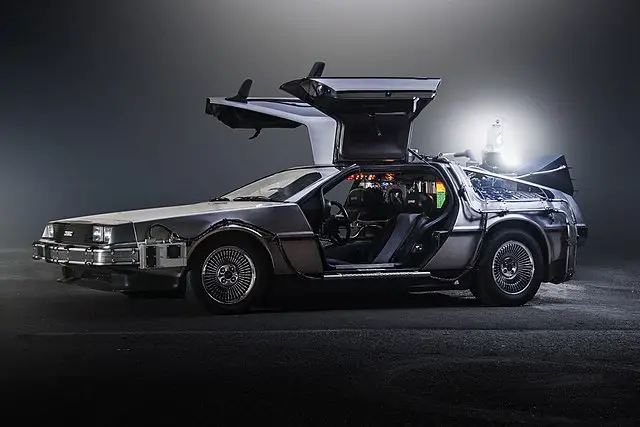Many examples of metric systems show up a lot more often than you realize in our day-to-day American life. Especially with your vices.
I just got back from a two-week trip overseas. And since I didn’t go to Liberia or Burma, that meant two weeks deep in the throes of the metric system. It’s pretty much the standard of measurement for the entire world.
Navigating through a world that uses meters, kilograms, and Celsius instead of feet, pounds, and Fahrenheit really made me feel like a fish out of water. But their pizzas and sub sandwiches still seemed to be measured in inches, leaving me momentarily confused.
11 Metric System examples used by Americans
I thought it would be interesting to take a look at the places where Americans happily and naturally use the metric system. And as I researched it… I realized the metric system has really found a way into a lot of our vices.
Here are 11 cases where the U.S. uses metric measurements in everyday life. Grab your rulers and measuring tapes, and let’s explore real world examples of metric systems that Americans happily use!
1 | Soda
This is perhaps our most famous use of the metric system. Our soda comes in two-liter bottles. Occasionally one-liter bottles. And, if you’re buying the generic Sam’s Club brand, uncomfortably massive three-liter bottles.
The rest of our soda doesn’t go metric — we have 12-ounce cans, 20-ounce bottles, and 64-ounce Double Gulps. Our other liquids — milk, juice, Sunny D, purple stuff — also aren’t sold in liters. But, for whatever reason, soda is… and it seems like it always will be.
2 | Condoms
The thickness of condoms is measured using the metric system, because 0.0019685 inches is so much less suave and sexy than the hot roundness of 0.5 millimeters.
The thickness of our pen tips is also measured in millimeters, but I felt like you’d be more inclined to read this if I went with condom thickness over pen thickness.
3 | Nutrition
We monitor fat, carbs, sugar, fiber, protein and the rest in grams. Well, we don’t really monitor them, per se — but we ARE aware they exist. Just look at the glaring example behind this beverage.

Using the metric system to measure nutrition is standard practice in the United States, like many other countries around the world. This allows consumers to easily compare the nutritional value of different products and make informed choices about what they eat.
And the rest of the world would probably not import our food products if they are labelled in imperial system. Because who wouldn’t want to do a bunch of math conversions just to figure out how much sugar or salt is in a box of cereal?
4 | Cocaine
Cocaine comes in grams and kilograms. I know this from movies. I have no idea what other drugs come in. But I assume anything imported from outside the U.S. stays in metric measurements.
It feels like a heroin dealer isn’t going to sit there in the airport parking lot waiting for you to cough up balloons full of heroin THEN sit there doing math to convert their weights to ounces.
5 | Diamonds
Carats are a metric unit without any imperial alternative. One carat is a very un-flashy 200 milligrams. Essentially, carat is really more of a branding tool than a necessary measurement unit.
And let’s face it, would you buy a 0.0141096 ounce of diamond? It sounds much more impressive if you’re selling a two-carat (or 400-gram) diamond, rather than a diamond that’s measured in tiny fractions of an ounce.
6 | Shorter running events where you probably don’t even get a participation medal at the end
I was reluctant to describe 5Ks and 10Ks as “shorter running events” since I really don’t like running, and they feel long to me, but whatever. Those are our only running events in kilometers.
Marathons and half-marathons are measured in miles. Gym teachers make you run a mile. And the NFL combine makes or breaks guys’ entire lives based on a few hundredths of a second differences in 40-yard dash times.

7 | Caffeine
Caffeine, one of the least addictive drugs in the planet, is measured in milligrams. So are other prescription drugs. BUT… we figure out the potency of a caffeinated drink using milligrams per ounce — which is really the Bo Jackson of measurements.
8 | Breast implants
Breast implants are measured in cc’s (which I felt warranted an apostrophe s pluralization). That’s cubic centimeters. The surgical tools used for breast implant procedures are also measured in metric units.
Fake breasts — which are now truly an American institution — are secretly metric. That’s clearly the equivalent of American flags being made in China.
9 | DeLorean time machines
As we all know, it takes 121 jigawatts — or gigawatts, if you believe Doc Brown was just oddly pronouncing a real word — to power a DeLorean time machine. Watts are a metric measurement; horsepower is the U.S. equivalent. (“Horsepower” was coined by James Watt, a Scottish guy who was born in the land of Metric System. That feels like a bar trivia question waiting to happen.)
Anyway, based on Back to the Future Part II, we’re only one year away from someone from the ’80s time traveling forward to us using 121 jigawatts, or 162,263,673 horsepower, of power. Hide your sports almanacs and self-tying shoes.

10 | Powerful car engines
Every car’s engine is described with liters now — like a 6.1-liter Hemi engine or a 1-liter SMART car engine. It’s explained in How Stuff Works, but basically refers to the maximum amount of power a car’s engine can produce.
So, to review, if you drive your Hemi pickup truck to go get breast implants, some cocaine, a Red Bull, condoms, diamonds and a giant bottle of Dr. Skipper, you’ve basically had a completely metric American day.
11 | Guns
Everyone in the country is armed with a nine-millimeter gun… But don’t worry, we haven’t completely abandoned our beloved inches.
Some guns are still referred to by their imperial measurements, such as the .45 caliber pistol because, ya know, just in case the King of England ever comes back here to try to convert this country to the metric system.